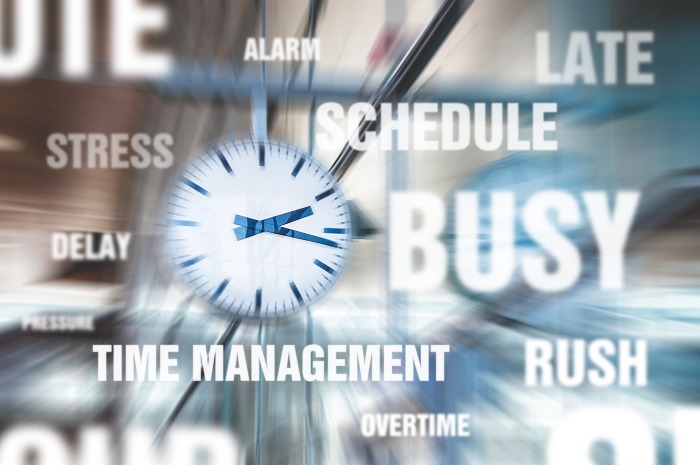Key reasons that can hinder your business growth

SMEs segment is the most vibrant and pioneering engine for economic growth in India. These units contribute about 33% (one-third) to India’s economy. As per the ministry’s Annual Report 2017-18, number of MSMEs (Micro, Small and Medium Enterprises) in India was estimated to be 63.38 million. Only a few of these units go on to become large business establishments. The estimate of the units going on to become large is abysmally low at 0.006%!
Why?
Let’s first understand the typical context of SMEs and then explore possible reasons behind this skewed number.
Small and Medium Enterprises (SMEs) are businesses that begin with some unique product / service or advantage and have make a name for themselves in their respective market. They have good initial growth and get repeat business from select customers, who eventually become their all-weather loyal clientele. This continues for about few years (ranging somewhere between 6 and 16 years) after which there comes a time when SMEs just don’t seem to grow. They become stagnant with a stable level of business, products and revenue.
The market continues to expand with some existing players becoming large and larger while new players also enter and garner a slice of the market. The owners or the persons at the helm at SMEs have good knowledge, knows merits of their products, enjoys competitive advantages, commands respect from their existing customers and have few more things to their side.
Notwithstanding these favourable attributes, SMEs owners find it difficult to grow further.
Here are top five challenges that create hurdles in SMEs’ journey in further business growth and expansion.
- Too busy to grow
 Most of the owners, having built their businesses from scratch, are engaged in routine work of transactional nature. Even after having a team of people, they’re primarily engaged in day-to-day operational affairs, spending 80-90% of their time at work. Their valuable time is lost managing first quadrant items and this keeps them busy through the day, weeks, months; leaving insufficient time to focus on developmental or expansion related work for business.
Most of the owners, having built their businesses from scratch, are engaged in routine work of transactional nature. Even after having a team of people, they’re primarily engaged in day-to-day operational affairs, spending 80-90% of their time at work. Their valuable time is lost managing first quadrant items and this keeps them busy through the day, weeks, months; leaving insufficient time to focus on developmental or expansion related work for business.
During the initial years, probably the entrepreneur may be doing almost everything due to lack of resources. After a stage, you need to delegate the routine / transactional nature of work and start devoting more time to business growth and expansion.
- Working without SMART Goals
The second reason is that most SMEs do not set either goals or SMART Goals. Just wishing to have more business is no goal. At the most, SMEs set goals for revenue targets for the year in question. But do not focus on big picture and miss taking a comprehensive view of operations and costs in the long run.

SMART goals are goals that encourage organizations and people for more growth and accomplishments. In absence of SMART goals, the long-term planning and guiding direction for the organization remains missing.
In absence of SMART goals for all, performance parameters of key processes are not quantified. The data on these parameters is not collected creating blind spots for resources consumptions and costs. This may lead to redundant activities, waste of resources, inefficiencies in systems and processes, none of which can be objectively examined and analyzed in absence of data and details on performance parameters. Studies have suggested that what gets measured, get managed and there are about 12-18% improvements in operational parameters.
- Missing accountability and KPIs for employees

In absence of goals / smart goals, the organization is unable to objectively define the output or contribution needed by employees. Employees do not know what they’re accountable for or what are expected results from them. They know their roles and responsibilities but are unable to find a link between their work and organization’s goals, if any. Moreover, organizations that set goals, do not make employees aware of the goals they’ve set. Employees usually do not take ownership or accountability of goals in such cases.
Another pitfall is that organizations do not reward ideation and innovation. Since employees are not accountable for improvements, generating new ideas and innovating remains responsibility of the top leaders and business owners.
- Passive mode of sales
Given lack goals, most SMEs settle for passive or reactive sales / marketing mode, i.e., they typically respond to requirements from existing or fixed clientele rather than actively seeking out or engaging with potential new clients. Again the companies do not undertake a detailed analysis of their customers and the business value (not sales) they generate for the company. 80:20 principle works here too, which means that there are 20% to top customers accounting for about 80% of their sales. Since, the business is well established and stable at a particular level, it becomes their comfort zone. They continue to operate at the same level what they were doing 5 years ago.
- What has worked, will work forever Mindset
 Since SMEs have running business with stable steady clientele base, many of them also develop a mindset that they know everything. They put disproportionate emphasis on the method that has worked for them leading current level of business and shun out most of the new or different ideas and methods. They forget that change is permanent and one needs to continually embrace change and adapt to remain relevant in changing market dynamics. Past accolades are no guarantee for future success. In sports, each match is new and one has to win every time to remain a top-ranking sportsman. He or she can’t rely on historical wins or records to keep winning. Same goes for business. What has worked in past, will not continue to work forever and business owners need to change their own mindset.
Since SMEs have running business with stable steady clientele base, many of them also develop a mindset that they know everything. They put disproportionate emphasis on the method that has worked for them leading current level of business and shun out most of the new or different ideas and methods. They forget that change is permanent and one needs to continually embrace change and adapt to remain relevant in changing market dynamics. Past accolades are no guarantee for future success. In sports, each match is new and one has to win every time to remain a top-ranking sportsman. He or she can’t rely on historical wins or records to keep winning. Same goes for business. What has worked in past, will not continue to work forever and business owners need to change their own mindset.
